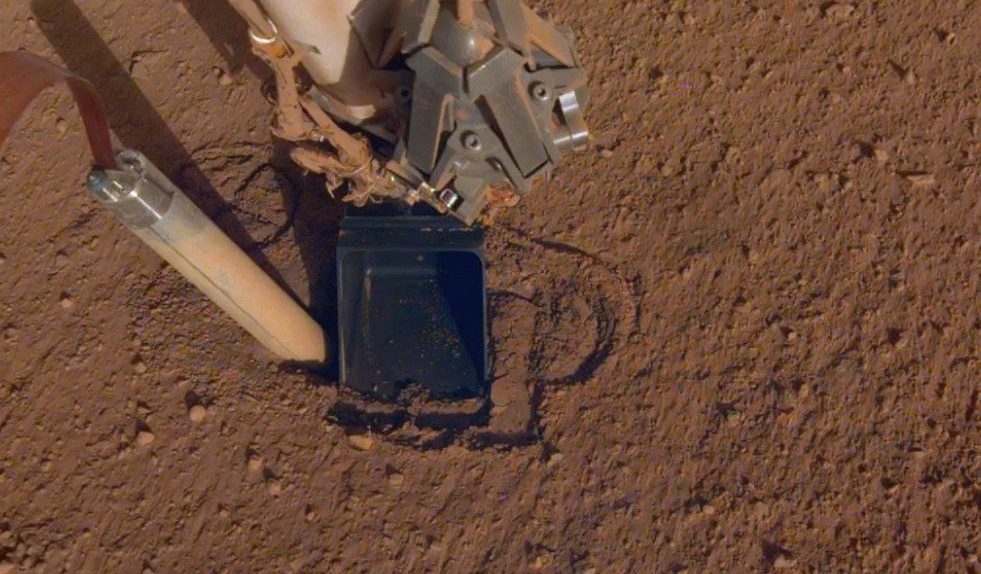Hey, so, funny story: Remember a couple of weeks back when NASA declared that a plan to get its Mars InSight probe to dig deeper into the planet’s surface had worked? It was exciting, since it meant the probe might finally be able to get deep enough to fulfill its destiny and return important data from the Red Planet. Well, that all changed, and the InSight team is essentially back at square one.
Shortly after the InSight lander touched down on Mars the self-hammering “mole” probe that was supposed to bury itself up to 16 feet into the planet began to falter. It just couldn’t get a grip on the loose Martian soil, and NASA had to invent a new way to make it work.
Over the course of several months, InSight team members instructed the robot to remove a shroud that was covering the probe and then, more recently, to push down on the soil surrounding the probe’s entry point to give it the grip it needed to push deeper. That plan worked, at least for a time, and the probe was able to use friction to its advantage and get a tiny bit deeper.
Mars continues to surprise us. While digging this weekend the mole backed about halfway out of the ground. Preliminary assessment points to unexpected soil properties as the main reason. Team looking at next steps. #SaveTheMole #Teamwork pic.twitter.com/UURvU8VTwZ
— NASA InSight (@NASAInSight) October 27, 2019
But strange things can happen when you’re working on other planets, and the next thing NASA knew, Mars had somehow pushed the probe back out again. It’s unclear why it happened, and NASA’s InSight team can only suggest “unexpected soil properties” as the cause, but that doesn’t make it any easier to stomach.
The probe is designed to measure heat within the planet and in order to do that it needs to dig deep into the surface. Ideally, the probe will reach a depth of at least 10 feet, but it could go as deep as 16 feet.
With the team “looking at next steps,” it’s unclear if the probe will ever truly live up to expectations. There had been a suggestion that InSight could use its robotic arm to push against the top of the probe to ensure it pushes itself deeper, but we’ll have to wait and see how NASA decides to counter this unfortunate setback.








